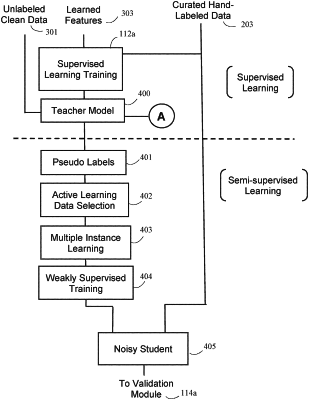| CPC A61B 1/000096 (2022.02) [G06F 18/211 (2023.01); G06F 18/214 (2023.01); G06F 18/217 (2023.01); G06F 18/2163 (2023.01); G06F 18/241 (2023.01); G06N 20/00 (2019.01); G06V 10/776 (2022.01); G06V 10/7753 (2022.01)] | 20 Claims |

|
1. A system for use in combination with a colonoscope for detecting and classifying features in a video stream output by the colonoscope, the system comprising:
programmed instructions stored on a first memory of a local computer having a first processor, the programmed instructions including an AI inference module that, when the programmed instructions are executed by the first processor, generates an annotation for presentation to a user on a display, the annotation corresponding to a potential detected abnormality in the video stream,
wherein the AI inference module is configured to periodically receive updated learned parameters from a remote server comprising a second processor and a second memory for storing instructions to, when executed by the second processor, self-improve classification of features detected in video data by executing the instructions to:
extract learned intermediate features from video data using self-supervised pretext tasks;
train a teacher model using the learned intermediate features and a curated dataset prepared by a domain expert user;
execute the teacher model to generate pseudo labels for the video data;
apply an active learning process to select a subset of the pseudo labels, the active learning process auto-selecting data based on a level of uncertainty;
apply a multiple instance learning process to the subset of pseudo labels to generate a reduced subset of pseudo labels;
employ a weakly supervised training process to train a noisy student model using the reduced subset of pseudo labels to thereby generate a set of learned parameters corresponding to one or more detected abnormalities;
validate the set of learned parameters to generate the updated learned parameters; and
periodically transmit the updated learned parameters to the first memory.
|